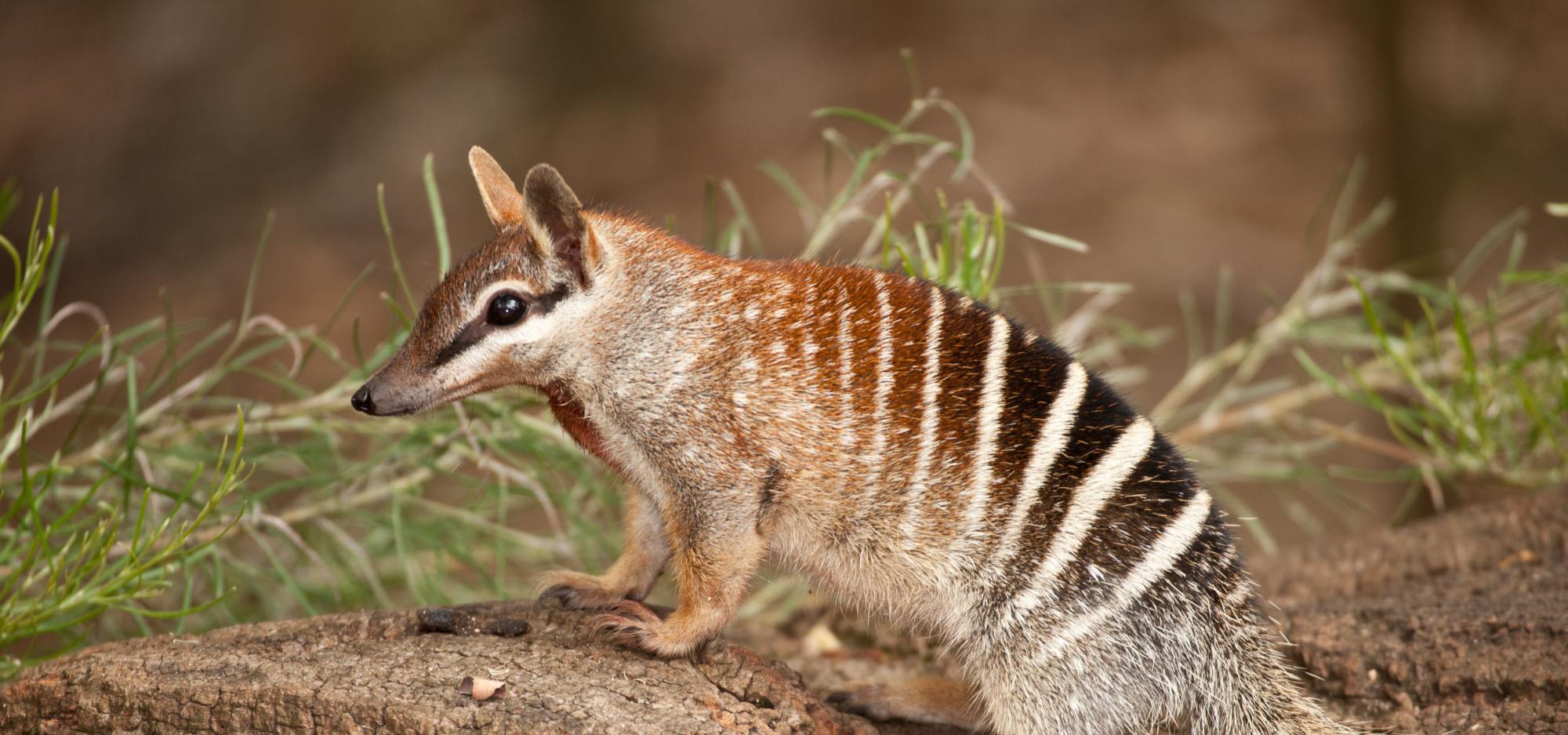Nyoongar Name: Noombat
Scientific Name: Myrmecobius fasciatus
Common Name: Numbat
Conservation status: Endangered. This means a species is very likely to become extinct in the near future.
Fun facts
- Numbats are marsupial carnivores; their diet consists of only one type of food and that’s termites. Termites, termites, termites -they can eat up to 20,000 a day!
- To be able to find 20,000 termites a day, numbats need to be active when the termites are active. In summer this is in early morning and late afternoon, the cooler times of the day. So that’s the time you’re likely to spot a numbat. As the day gets hotter, they find a cool spot or inside a log.
- During the colder months termites are active much later in the day, so numbats rise later too.
- Having a long, pointed nose helps them to get into small spaces to search for termites. Their slender sticky tongue can easily get into these spaces to collect them. By eating so many of them, numbats keep termite populations under control.
- They sense where the termites are via smell and possibly small vibrations in the ground.
- Their striped fur provides great camouflage and helps them to blend in with their woodland habitat. In fact, new research has demonstrated that individual numbats can be identified by the specific markings on their fur, a bit like we humans and our fingerprints.
- Numbats are diurnal animals meaning that they are only active during the daytime.
- They are a dasyurid marsupial meaning they do not have a proper pouch like a kangaroo for carrying their young but instead, have skinfolds to cover their babies as they feed.
- Baby numbats are called joeys and they feed from their mother until they are about nine months old which is when they learn to find and eat termites.
- Numbats are very water wise getting all of their water needs from the termites they eat.
- The Numbat was proclaimed WA’s mammal emblem on 25 July 1973.
Not So Fun Facts
It is estimated that there are fewer than 1,000 numbats left in the wild. As a comparison this is about the same number of students attending 2 or 3 average sized city primary schools, so, not many!
Numbats were once found across the southern part of Australia, including Western Australia, South Australia and parts of New South Wales, Victoria and the Northern Territory.
They are now restricted to small, isolated pockets of south-west Western Australia. Two natural populations remain in Western Australia. One at Dryandra Woodlands, near Narrogin and the other at Perup Nature Reserve, near Manjimup.
There’s a very real chance that numbats could become extinct in our lifetime!
Threats to their survival
Numbats are especially vulnerable to predation (being attacked) by introduced predators like foxes and cats, both of which are incredible hunters. With these predators around numbats don’t stand much of a chance.
They are also eaten by native birds and reptiles but because they have evolved alongside these predators, they are better able to escape them.
Another major threat is habitat loss through the clearing of their favoured woodlands. Clearing has occurred to make way for farming, mining and development for people’s homes.
Loss of shelter through removal of logs from bushland for firewood not only removes places for numbats to shelter but also, if the logs go, so too do the termites making it harder for them to find their 20,000 a day!
Fire is also a threat so land needs to be carefully managed to prevent large bushfires from happening.
Find me at the Museum
You can find me in the Woodland Wonders section within the Wild Life Gallery on Level 3 of WA Museum Boola Bardip.
Image credits: Header image from Adobe Stock.
